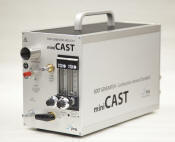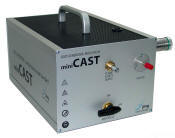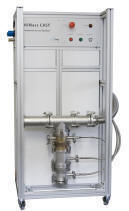CAST Combustion Aerosol STandard - High performance soot generators for gaseous & liquid fuel
CAST Flames
Every burner on the CAST basis is able to generate soot with either a diffusion or premixed flame. In order to operate with a premixed flame, the fuel gas is mixed with an oxidiser such as air or oxygen before it is served to the burner.
In comparison to a diffusion flame, carbon and soot particles formed in a premixed flame also meet the oxidiser within a flame and react with them. This results in small soot particles and lower mass output generally expected from a premixed flame. Soot particles and mass output also grow when the oxygen content in the fuel gas reduces and the flame becomes a diffusion flame.
CAST Burners
Generating soot requires a flame used to combust hydrocarbon. Increasing this generation for precise and repeatable soot characteristics requires well-founded techniques and expertise. The burners based on the CAST-principle show following advantages:
- Isolated flame chamber guarantees a stable flame.
- Flame chamber separated from the queching track and therefore safe of any turbulence from queching processes.
- Capability to be used for both diffusion and premixed flame.
- Very scalable as there is no any further parts in combustion chamber that may disturb the flame and reduce the flame stability. The burner can be designed for any size to meet different requirements on flow rate and particle concentration.
- High precision (particle size < 2%, particle concentration < 5%)



